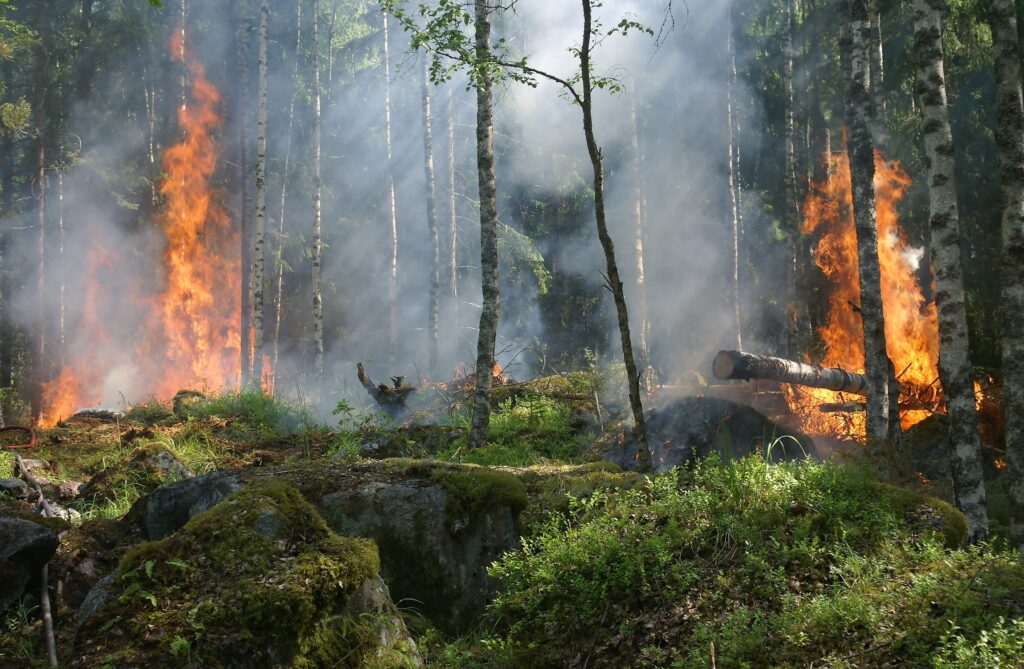The U.S. National Guard uses artificial intelligence (AI) equipped drones to track wildfires. Drones were first used as early as 2013, by the National Guard, to track wildfires after California Air National Guardsmen were assigned as the 163rd Reconnaissance Wing, which operated the MQ-1 Predator drone. The new AI-backed drones are able to map out to where they think the fire will spread, based on previous fires.
In 2017, MQ-9 Reaper drones were sent to California after nine counties declared a state of emergency. The drones took images of all the active wildfires using electrical, optical, and infrared sensors to extract as much data as possible for the firefighters on the ground.
At the National Guard headquarters, analysts examined the footage and outlined the edge of the fire at the current point in time to give firefighters the best overview of where the fires are and where they are likely to move next. Such a complete process usually took about six hours, which is obviously way too long when challenged by a rapid fire.
Air Force Lt. Gen., John N.T. Shanahan, became the first director of a new Pentagon office in 2019, that was created to be used for all of the U.S. military’s work on artificial intelligence, which deploys computer vision technology to track and combat wildfires.
The Pentagon’s office, known as the Joint Artificial Intelligence Center, has been working with National Guard units combating wildfires in California, as well as hurricanes elsewhere. By taking tools developed for Project Maven, which was an initiative to analyze and identify objects on the ground from videos shot by drones during the fight against the Islamic State, they were able to apply computer vision tools to track natural disasters. By doing so, they “[realized] that the way things had been done … nothing had changed in 40 years” according to a statement by Shanahan in an interview with CQ Roll Call. Natural disasters were still being tracked, says Shanahan, by “using acetate and grease pencils in the back of a pickup truck .… No one could track wildfires in real time.”*
By having the U.S. National Guard use AI equipped drones, such drones with full-motion video sensors over wildfire zones, this enables the Pentagon to assist firefighters with live fire locations using specialized maps sent to hand-held devices. According to Shanahan, such a program eventually is to be handed over to the National Guard and local firefighting units.
The Pentagon’s artificial intelligence efforts, Shanahan said, was helped by the fire fighting project as it assisted in understanding how to “ingest large quantities of live data from a highly dynamic situation, to coordinate response efforts with multiple agencies, and deliver results in a timely manner.”*
This fits with the goal of Shanahan’s office — to change the military’s culture from the emphasis of the industrial-age on hardware and weapons to the emphasis on data of the digital-age.
Shanahan gave the following challenge:
“This is the world we are in now. Data-centric environment gives us a competitive advantage. How do we adapt faster than our adversary? This is about decision advantage.”*
2020 Projects
Shanahan points out that, for 2020, the Pentagon office is showcasing several projects to demonstrate how artificial intelligence-enabled tools can help the military and make his office the, “1-800-AI for the department.”
Future
The National Guard’s use of artificial intelligence (AI) equipped drones to track wildfires enables them to map out where they think the fire will spread, based on previous fires. These MQ-9 Reaper drones can take images of all the active wildfires using electrical, optical, and infrared sensors to extract as much data as possible for the firefighters on the ground.
This is an exciting proactive way to more accurately predict where the fire will spread, which can help minimize the loss of life of firefighters as potential victims.
Shanahan also points out that this “. . . Data-centric environment gives us a competitive advantage.”
This, of course, does not apply only to firefighting, but the numerous aspects of life in the third millennium.



